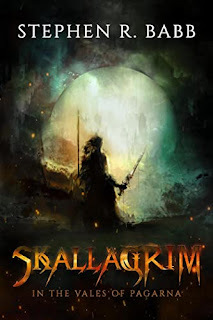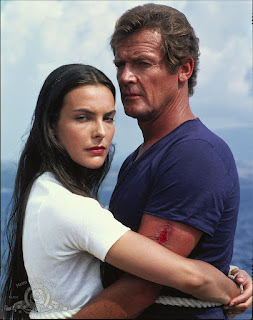Brian Murphy's Blog, page 30
April 2, 2022
Judas Priest! ... and Gordon Lightfoot?
Then six days later on Sunday, April 10, I go to see ... Gordon Lightfoot.
It may seem like an odd combo, a pairing that seems to attract radically different fanbases. Except that both are badasses in their own respective spheres of music, each with an unconquered spirit that can be described as metal (using that term as an adjective). So, I'm equally pumped for both.
This post was meant for Metal Friday by the way but yesterday got away from me so I'm shoehorning it into that category.
I was supposed to see Priest back on Oct. 31, 2021--Halloween night which would have added even more of a metal atmosphere to the show. But guitarist Richie Faulkner decided that an on-stage acute aortic aneurysm was too metal to pass up (the guy kept playing right though it by the way, finishing up the guitar solo in Painkiller. Honestly there is nothing, nor could there be anything, more metal than that). Faulkner nearly died after the dreaded widowmaker and only the presence of a first rate heart and lung center four minutes away from the stadium saved his life. Parts of Faulkner's chest were “replaced with mechanical components.” He added: “I’m literally made of metal now.”
Cue "Electric Eye."
So, that resulted in an understandably lengthy postponement for the Priest.
But here we are, on the eve of seeing a band that is either my favorite metal band of all time or second favorite to the great Iron Maiden, depending on what day of the week you ask me. I'm super pumped, of course.
Now on to Mr. Lightfoot.
It was my dad that introduced me to the Canadian singer-songwriter, decades ago, when he sat me down to listen to "The Wreck of the Edmund Fitzgerald." I remember really liking the song, a haunting retelling of a boat that went down in Lake Superior in November 1975, taking all 29 of its crew with it to the bottom. Later I went on to discover the rest of his catalog, including hits like "Sundown," "Carefree Highway," "Song for a Winter's Night" and my personal favorite, "Early Morning Rain."
Now I get to see Lightfoot, age 83, with my dad, age 78. I'm glad both are still here. Lightfoot is still doing it even at that age, which is just remarkable. I'm sure he's lost a fair bit off the fastball but I don't really care.
The show will be held in an intimate arena, the Tupelo Music Hall in Derry, NH, a venue that hosts acoustic artists and describes itself as a "friendly, relaxed, attractive, and intimate setting." The environment will likely be a lot more chill than Rob Halford storming the stage on a Harley Davidson in a hockey arena full of men in black t-shirts.
But, equally cool.
Good times indeed.
April 1, 2022
Skallagrim: In the Vales of Pagarna
 Grim, but not GrimdarkI have said I wanted to review more modern sword-and-sorcery written by contemporary authors, and so stepped up to that promise with Skallagrim: In the Vales of Pagarna. The author is Steve Babb, a name that you might recognize as one of the founders of the progressive rock band Glass Hammer. Steve is a sometime passer-through of my blog, someone I’ve mentioned here before. This is his debut fantasy novel, which published this month.
Grim, but not GrimdarkI have said I wanted to review more modern sword-and-sorcery written by contemporary authors, and so stepped up to that promise with Skallagrim: In the Vales of Pagarna. The author is Steve Babb, a name that you might recognize as one of the founders of the progressive rock band Glass Hammer. Steve is a sometime passer-through of my blog, someone I’ve mentioned here before. This is his debut fantasy novel, which published this month.To cut to the chase:
Do read this if you are looking for something different, a book not easily categorized, that wears a handful of prominent influences on its sleeve. Some obvious ones are Michael Moorcock’s Elric, and J.R.R. Tolkien’s The Lord of the Rings. There are heavy echoes of both in here. I’m pretty sure I picked up on a few prog song references, too (Time Stands Still by Rush, Steve?).
Don’t read this if you are looking for traditional sword-and-sorcery. That this is book 1 should have already tipped things off. I would say it treads closer to mainstream fantasy, albeit with healthy doses of combat and weirdness that push it back toward S&S territory.
The book’s conceit is that the protagonist, a young rogue named Skallagrim, has lost his memory; he does not know who he is, and cannot remember his friends or his own history. He just knows the blue-eyed girl whom he loves has been abducted, and is due to be sacrificed on the altar of a sorcerer. This sets off a rescue mission through the Vales of Pagarna, a dangerous and weird valley. Skallagrim is also the beneficiary of a powerful but cursed sword with the portentous name of Terminus, a final point in time and space. It represents hope, with a bitter edge. Terminus is double-edged in every sense of the word.
The dialogue is pretty darned cracking. Babb has an ear for it, and that makes the book flow well, very easy to read. The quest is compelling and the encounters with the likes of flesh-eating ghouls memorable and fun.
I did have some minor issues with the novel. I’m an S&S guy through and through and prefer books where lots of things happen at a rapid clip. This book tends to take its time, although there is plenty of action, combat, and weirdness. To be fair there is no leisurely build up: Babb drops the reader into a swirling melee on page one.
The other issue is that I’m not entirely sold on the romance, at least through book one. As noted Skallagrim has lost his memories, but that makes his obsession with this girl not immediately apparent. His primary motivation is her rescue, and what is purer? But that doesn’t mean the reader understands why he’s so desperate and driven. I was deeply intrigued by Skallagrim’s encounter with a powerful and long-lived but fun and lusty water nymph, a memorable character who I hope returns for book two. And I suspect we’ll learn more about Skallagrim’s persona and motivations in the sequel.
A few other items I’m still chewing on… near the end of the book an aging sorcerer delivers a powerful soliloquy on aging. Although Skallagrim is young, the author of this book is not, nor is this reader. There is much in here about lost youth, and lost loves, and regret, and seizing the opportunity while you still can. The sorcerer’s words struck home, at least for this reader.
More ruminations… Skallagrim suffers a grim, face-altering wound at the outset of the novel and Babb expends lot of ink on the character’s disfigurement. Skallagrim is afflicted with bouts of self-loathing, guilt, and unworthiness, even contemplations of suicide. Some heavy stuff I was not expecting, and deeper characterization than you typically get in S&S protagonists.
Overall this is a solid first effort by Babb. Skallagrim: In the Vales of Pagarna can be read and enjoyed alone, as it ends with a satisfying final battle. Book 2 will presumably continue with Skallagrim’s pursuit of his lost love.
March 30, 2022
S&S updates: Thune's Vision kickstarter, new Conan novel
Author Schuyler Hernstrom recently launched a kickstarter in conjunction with a new publishing outfit, Pilum Press. The project is for a new version of his out-of-print Thune's Vision, with a couple original stories added to the collection. I threw in my pledge for a $35 hardcover; I was pleased to receive notification this AM that the kickstarter met its modest funding goal of $5,000 and the project will proceed. I greatly enjoyed Hernstrom's The Eye of Sounnu (DMR Books), which to me successfully captured an old school S&S vibe while managing to avoid the slavish pastiche trap. Hernstrom has a compelling writing style and tells good stories. I had been thinking of tracking down a used copy of Thune's Vision until I heard about this upcoming project a few months ago. Glad to see it has come to fruition and met its initial goal, but please consider getting in on it.
Conan Returns! Yes, the mighty-thewed barbarian is getting an fully authorized novel treatment by author S.M. Stirling. Conan: Blood of the Serpent is slated to publish in October. I have not read anything by Stirling but I'm sure I will pick this up. It will I believe be the first authorized Conan novel since 2003's Conan of Venarium (TOR), not counting film adaptations/gaming material and the like. It sounds interesting enough; from the Conan.com website: "We wanted to place the adventure within the timeline of Howard’s tales, and over the course of several outlines determined that it would lead into one of [Stirling's] personal favorites, “Red Nails.” Thus it would feature other elements Conan fans will find familiar, while being entirely accessible to readers who may come to the genre via A Game of Thrones, The Witcher, or works by authors like Jay Kristoff or Mark Lawrence." I will admit that I'm not much of a pastiche Conan fan, with a few exceptions. I hope Stirling can capture even some of Howard's original magic. You can pre-order a hardcover copy from Titan Books now at the link above.
March 26, 2022
Fueling the Fire of Fantasy Fiction: Gaming’s Influence on Today’s Writers
Another post of mine is up and can be found on the blog of Goodman Games/Tales from the Magician's Skull: Fueling the Fire of Fantasy Fiction: Gaming’s Influence on Today’s Writers.
This is sort of a part II/a self-rebuttal to Dungeons & Dragons: Friend or Foe of Sword-and-Sorcery?
I haven't fully made up my mind on how gaming impacted S&S/fantasy fiction more broadly, but I sort of sum up my current thoughts as they stand today at the end of part II:
Fantasy fiction that relies on an ordered set of game rules as its foundation, or seeks to recapture free-flowing moments of social serendipity at the game table without applying the rules or discipline of good storytelling, is not likely to capture the imagination of readers, nor stand the test of time. The two mediums, gaming and writing, share some commonalities but are ultimately different disciplines.
But, each can fuel the other.
March 25, 2022
For Your Eyes Only... just what I needed
 An involuntary swim with sharks,
An involuntary swim with sharks, mollified by embrace of hot babe.Last night I decided a mental break was in order and so I watched 1981’s For Your Eyes Only. It was just what I needed. I gave it my full attention, and it held it. I had forgotten how much action is packed into this film, scene after scene of hijacked helicopters, car chases through the Greek countryside, ski chases down mountainsides, death-defying climbs up sheer rock faces, underwater brushes with sharks and divers in murderous deep-water suits, on and on. Incredible fun, never a dull moment.
I watched this film many times as a kid, as it seemed to be on HBO every time I turned on the TV. But it had been ... 35 years since I saw it last in full? More? I think part of the reason I was so enamored with what I was watching was nostalgia. There is something about the 80s, the early 80s … it just made me extremely comfortable, the low-tech and no cell phones and Bond's turbo Lotus and Walther PPKs and flings with beautiful women. Set against the backdrop of the cold war. All exotic (for the time), but now intensely familiar, reminders of a time that has slipped into history.
Yes, like all Bond films this one has its share of ridiculousness. I had forgotten one sequence where three dudes in full hockey gear attempt to kill Bond on an ice rink. They gear up in full uniforms, skates, sticks, masks... none bothered to bring a gun, and Bond disposes of them, one by Zamboni, and tosses them into a net, which tallies the 3-0 score on a scoreboard. WTF... but still awesome.
Bond films are great for so many reasons, but one is the familiar flourishes and sequences. Every film seems to have Bond walking through a laboratory to view Q's latest contraptions and spy gear. This one had a spring-loaded arm cast capable of smashing a head, and an umbrella that, when exposed to water, snaps down with murderous steel hooks around the user's neck. I always love the opening action/title sequences, the dalliances with Moneypenny, the physical specimen goons, and of course Bond's roguishness and effortless charm, even in the most dire of circumstances.
The on-location film work was beautiful, the pre-CGI stunt work including high speed motorbike and ski chases through the snow of the Italian mountains, and mountain climbing, impressive. The theme song is one of the best in the series, earning a nomination for Best Original Song at the Academy Awards in 1982. It sets the tone... it's got sex in it, but also mystery, just what a Bond film needs of course.
I started the new job on Monday and it was just what I needed after a firehose of a week. I need to do this again. One film, and the world, is not enough.
Are there any Bond aficionados out there that would recommend another? There are many I have not seen, and I'm itching to work backwards to keep the nostalgia train running... but also I have yet to see a single Daniel Craig entry in the series. I know, but I just don't watch much TV, at all. I'm torn between Goldfinger, The Spy Who Loved Me, and the 2006 version of Casino Royale, the latter of which I've heard so many good things about. I have seen Goldfinger, but so long ago that most of the details (save Oddjob, the laser sequence, and a gal dipped in gold) have escaped me.
Probably hard to go wrong with any of them.
 Bad ass car that we didn't get to see enough of ... thugs
Bad ass car that we didn't get to see enough of ... thugs should have heeded the warning.
March 18, 2022
Slinging sword-and-sorcery about the interwebs
Catching up with Tom Barber, Classic S&S Artist, at the blog of DMR Books.
Dungeons & Dragons: Friend or Foe of Sword-and-Sorcery? at the blog of Goodman Games/Tales from the Magician's Skull.
The first is the result of a couple emails exchanged with my friend Tom Barber, who is looking to sell some of his artwork. He's not doing commissioned pieces at the moment, but has some work that will likely be of interest to fans of spec-fic. I am planning to see Tom in the next couple months.
As for the latter piece, hey, we all enjoy a little shit-stirring every once in a while. I love RPGs and have been an on-again/off-again player for large portions of my life, but I don't think they are an unalloyed good for budding S&S writers. YMMV. It is weird that their meteoric rise tracks very closely with S&S's precipitous fall. It may be a coincidence, but perhaps not.
March 9, 2022
Fantasy without Tolkien? Yes that happened, and yes it matters.
My latest post is up on the blog of DMR Books: "Fantasy without Tolkien? Yes that happened, and yes it matters." Check it out here.
This one was prompted by a few lines I heard Corey Olsen, aka., The Tolkien Professor, state during one of his recent podcasts. It was rather a throwaway line but struck me as not fair to fantasists working before the world-altering impact of The Lord of the Rings, and so I felt compelled to respond.
If you read the post, you will see that A) I venerate Tolkien, and B) I enjoy Olsen's work. But, I also call them as I see them. And I think the fantasy genre would have materialized even without JRRT. It would have been far less rich, a paler version, and the genre might never have attained the commercial success it now enjoys. I can hardly bear to think of it... but, I think if you review the evidence of what was occurring in the 1950s and 60s, prior to the Ace Tolkien explosion of 1965, the arrival of the genre was inevitable.
We'll never know and this is of course all speculation, a game of alternative history. Tolkien's arrival ushered in a new brand of fantasy and changed the course of history, and fantasy fiction, forever. But, we should not forget that he himself was influenced by many fine writers of fantasy, the Burroughs boom was in full swing, and in all likelihood we would have had the Lancer Conan Saga. The likes of Burroughs and Leiber and Moorcock and Vance and Lovecraft were coalescing and emerging from the shadow of 1950s science-fiction.
And, with all due respect to Olsen, their work absolutely mattered.
March 4, 2022
Joe Lansdale: The art of good writing
Joe Lansdale is one of my favorite authors. He consistently delivers good, tightly-plotted stories, populated with memorable characters, and moments of violence, sometimes shocking, but leavened with a great sense of humor throughout. He keeps you turning the pages, which in and of itself is an art form. He has a inimitable voice that comes through on every page.
Reading "Hyenas" from his collection Hap and Leonard (love those characters, who briefly enjoyed the limelight with a far too quick to be cancelled TV series ) reminded me of how good Lansdale can be. Look at what he does with this opening. You're effortlessly all in with a just a few paragraphs of description.
When I drove over to the nightclub, Leonard was sitting on the curb holding a bloody rag to his head. Two police cruisers were parked just down from where he sat. One of the cops, Jane Bowden, a stout woman with her blonde hair tied back, was standing by Leonard. I knew her a little. She was a friend of my girlfriend, Brett. There was a guy stretched out in the parking lot on his back.
I parked and walked over, glanced at the man on the ground.
He didn't look so good, like a poisoned insect on its way out. His eyes, which could be barely seen through the swelling, were roaming around in his head like maybe they were about to go down a drain. His mouth was bloody, but no bloodier than his nose and cheekbones. He was missing teeth. I knew that because quite a few of them were on his chest, like Chiclets he had spat out. I saw what looked like a chunk of his hair lying near by. The parking lot made the hunk of blond hair appear bronze. He was missing a shoe. I saw it just under one of the cop cars. It was still tied.
I went over and tried not to look too grim or too happy. Truth was I didn't know how to play it, because I didn't know the situation. I didn't know who had started what, and why.
It paints a scene that begs the story to be told. Kudos to Joe.
If you haven't read any of his stuff I recommend you start with his Hap and Leonard stories (Mucho Mojo is a particular favorite of mine) or perhaps his standalone novel The Bottoms. This stuff may not be sword-and-sorcery but it moves like the best of it.
February 25, 2022
In the house, with Rogues in the House
You can listen to the episode here.
A few notes I jotted down prior to the show... sword-and-sorcery today is a very small niche in an incredibly popular broader fantasy genre. Below are some of the interesting things going on it, but added up, it’s still quite small.
· A few good but niche publishers (DMR Books, Rogue Blades Entertainment, Pulp Hero Press, etc.).
· A good magazine (Tales from the Magician’s Skull).
· A swelling number of amateur publishing outlets (Whetstone, Flashing Swords, Heroic Fantasy Quarterly, etc.).
· Some watering holes (Whetstone Discord, a small Reddit group, various small groups on REH websites, Facebook, etc.).
· Some publicity on Black Gate, blogs like my own/Silver Key, DMR Books has a great blog, as is the blog of Tales from the Magician’s Skull.
· Some new anthologies. Swords and Sorceries (Parallel Universe Publications has 3 volumes), Savage Realms. Blood on the Blade (Flinch Books)
· It’s supported by one good podcast—Rogues in the House. Cromcast has at times supported S&S, occasional episodes from likes of Elder Sign. Oliver Brackenbury’s So I’m Writing a Novel explores S&S. Appendix N Book Club covers a fair bit of S&S.
· Some good authors—Scott Oden and Howard Andrew Jones, James Enge, Schuyler Hernstrom, Adrian Cole. Keith Taylor is still writing and Michael Moorcock is still with us, with an original Elric story due to publish next year and reportedly “definitive” Elric editions coming out.
· But, it’s still a widely misused and misunderstood term, which is what I tried to help repair with Flame and Crimson. Still used synonymously with “fantasy.”
· It’s not a genre that major publishers want to take a chance on, and therefore not commercially viable.
February 18, 2022
Robert E. Howard Foundation awards nominations announced
The Hyrkanian is for my essay "Myth Manifesting in the Present: Robert E. Howard's 'Marchers of Valhalla,'" which you can find over at the DMR Blog. I like that piece, as the subject matter pressed all my buttons (come on, Vikings and Howard, and myth intermingling with the present day?) I was gripped by a James Allison level of fevered possession while writing it. The Venarium is further specified for my work on various recent essays, as well as for writing Flame and Crimson.
I have been at the writing/blogging game for some time, and will leave it to others for what qualifies as an emerging scholar. Flame and Crimson required of course an immense level of research. I don't know the other names on that list, save for the administrator of the fine The World of Robert E. Howard website. But it's really cool to see the breadth of scholarly work being done, both domestically and abroad.
There are many, many worthy entries on these lists. To be nominated is as always an incredible honor. Just as with the Atlantean for which I was nominated, and ultimately won last year, I don't know who nominated me for these categories, but ... thank you! I do hope to see Robert E. Howard Changed My Life win an award. I owe that fine book a review.
This announcement also serves as a reminder that I NEED to get to Robert E. Howard Days in Cross Plains and see the Howard homestead. Maybe this will be the year.



